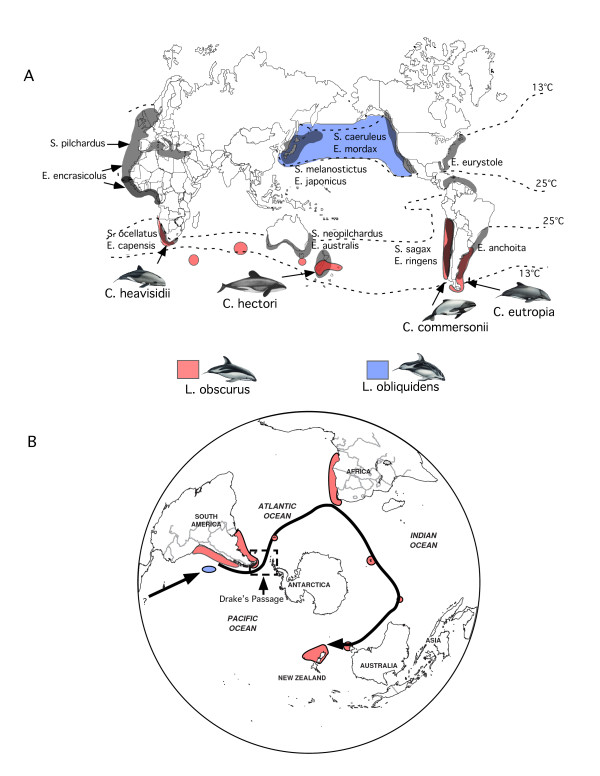Figure 1.
Global distribution of the dolphin genera Lagenorhynchus and Cephalorhynchus and associated prey species in temperate ocean regions. (A) Grey shaded areas outline the distribution of sardines (Sardinops, Sardina) and anchovy (Engraulis), which are regionally bounded by the 13°C and 25°C isotherms (dotted curves; modified from Grant and Bowen [50]). Coloured areas indicate the distribution of Lagenorhynchus species. Cephalorhynchus distributions overlap partially with Lagenorhynchus species in all areas indicated with an arrow. The distribution of dolphin species with anchovy and sardines is indicated where coloured and grey shaded areas overlap along temperate, coastal regions. (B) The west-wind drift hypothesis suggests that the dusky dolphin (L. obscurus) dispersed via a circum-global band of uninterrupted cool water, starting in coastal Peru, moving eastward through Drake's passage, to Argentina, South Africa, and New Zealand.

